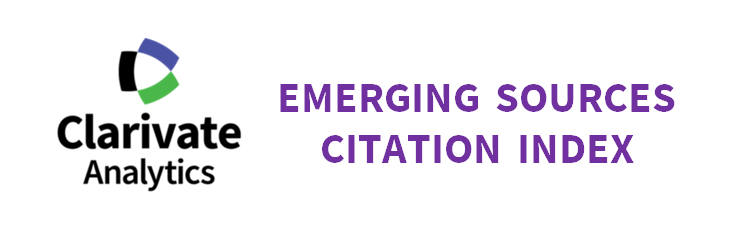Óptima planeación de redes celulares para la infraestructura de medición inteligente en zonas rurales y remotas
DOI:
https://doi.org/10.17981/ingecuc.11.2.2015.05Palabras clave:
Red Eléctrica Inteligente, Medición Inteligente, AMI, Red Celular, Óptima Planeación, Tráfico, Enrutamiento ÓptimoResumen
La medición inteligente se emplea para controlar, monitorear y conocer el estado del sistema en tiempo real; por ese motivo, la incorporación de redes inteligentes beneficia primordialmente al sistema eléctrico. Así mismo, con la reutilización de la infraestructura y del espectro celular, ayuda a mitigar el tiempo y el costo de su implementación. Con la finalidad de reducir el tráfico y la saturación de las redes celulares, se propone determinar la ruta óptima para el envío de la información, para ello se analiza un ruteo óptimo por medio de distancias y un ruteo óptimo por medio de flujo de tráfico. Gracias a este análisis, se determina cuál es la ruta óptima cuando no existe tráfico en la red celular o cuando existe un tráfico prolongado, y cuáles son las tendencias de tráfico que se pueden producir por el envío excesivo de la información de los medidores inteligentes hacia las empresas eléctricas de distribución.
Descargas
Citas
[2] J. Kim, S. Cho, and H. Shin, “Advanced Power Distribution System Con fi guration for Smart Grid,” IEEE Trans. Smart Grid, vol. 4, no. 1, pp. 353–358, 2013. DOI: 10.1109/TSG.2012.2233771
[3] C. Selva, K. Srinivas, G. Ayyappan, and M. Venkatachala, “Advanced Metering Infrastructure for Smart Grid Applications,” Recent Trends Inf. Technol. (ICRTIT), 2012 Int. Conf. IEEE, pp. 145–150, 2012. DOI: 10.1109/ICRTIT.2012.6206777
[4] S. SAydjari and V. Varadharajan, “The Smarter Grid,” Secur. Privacy, IEEE, vol. 8, no. 1, pp. 60 – 63, 2010. DOI: 10.1109/MSP.2010.52
[5] L. Chun-hao and N. Ansari, “CONSUMER : A Novel Hybrid Intrusion Detection System for Distribution Networks in Smart Grid,” IEEE Trans. Emerg. Top. Comput., vol. 1, no. 1, pp. 33 – 44, 2013. DOI: 10.1109/TETC.2013.2274043
[6] E. Inga and J. Inga, “Wireless Communications and Virtual Operator for Residential Electric Metering,” 12th Lat. Am. Caribb. Conf. Eng. Technol., pp. 1–9, 2014.
[7] B. Karimi and V. Namboodiri, “On the Capacity of a Wireless Backhaul for the Distribution Level of the Smart Grid,” Syst. Journal, IEEE, vol. 8, no. 2, pp. 521–532, 2014. DOI: 10.1109/JSYST.2013.2260701
[8] E. Inga, R. Hincapie, C. Suarez, and G. Arevalo, “Shortest path for optimal routing on Advanced Metering Infrastructure using cellular networks,” in Communications and Computing (COLCOM), 2015 IEEE Colombian Conference on, 2015, pp. 1 – 6.
[9] Z. Jia, J. Chen, and Y. Liao, “State estimation in distribution system considering effects of AMI data,” 2013 Proc. IEEE Southeastcon, pp. 1–6, Apr. 2013. DOI: 10.1109/SECON.2013.6567406
[10] R. R. Mohassel, A. Fung, F. Mohammadi, and K. Raahemifar, “Application of Advanced Metering Infrastructure in Smart Grids,” Control Autom. (MED), 2014 22nd Mediterr. Conf. IEEE, pp. 822 – 828, 2014. DOI: 10.1109/MED.2014.696147
[11] C. Lo and N. Ansari, “The Progressive Smart Grid System from Both Power and Communications Aspects,” Commun. Surv. Tutorials, IEEE, vol. 14, no. 3, pp. 799–821, 2012. DOI: 10.1109/SURV.2011.072811.00089
[12] P. Kulkarni, S. Gormus, Z. Fan, and F. Ramos, “AMI Mesh Networks—A Practical Solution and Its Performance Evaluation,” IEEE Trans. Smart Grid, vol. 3, no. 3, pp. 1469–1481, Sep. 2012. DOI: 10.1109/TSG.2012.2205023
[13] E. Hossain, Z. Han, and H. V. Poor, Smart Grid communication and networking, First edit. United Stated of America: Cambridge University Press, 2012, p. 481.
[14] H. Sui and W.-J. Lee, “An AMI based measurement and control system in smart distribution grid,” 2011 IEEE Ind. Commer. Power Syst. Tech. Conf., pp. 1–5, May 2011. DOI: 10.1109/ICPS.2011.5890876
[15] C. Andres and C. John, The Advanced Smart Grid Edge Power Driving Sustainability, First Edit. 2011, p. 268.
[16] M. R. Souryal and N. Golmie, “Analysis of advanced metering over a Wide Area Cellular Network,” 2011 IEEE Int. Conf. Smart Grid Commun., pp. 102–107, Oct. 2011. DOI: 10.1109/SmartGridComm.2011.6102299
[17] B. Saint, “Rural Distribution System Planning using Smart Grid Technologies,” Rural Electr. Power Conf. 2009. REPC ’09. IEEE, no. 09, pp. 0–8, 2009. DOI: 10.1109/REPCON.2009.4919421
[18] S. Li, J. Huang, and S. Member, “Dynamic Profit Maximization of Cognitive Mobile Virtual Network Operator,” IEEE Trans. Mob. Comput., vol. 13, no. 3, pp. 526–540, 2014. DOI: 10.1109/TMC.2013.10
[19] M. Gupta, S. Gupta, and T. Thakur, “Design and impact of wireless AMI for distribution utilities,” 2013 Annu. IEEE India Conf., pp. 1–6, Dec. 2013. DOI: 10.1109/INDCON.2013.6726103
[20] H. Li, S. Gong, L. Lai, Z. Han, S. Member, R. C. Qiu, and D. Yang, “Efficient and Secure Wireless Communications for Advanced Metering Infrastructure in Smart Grids,” IEEE Trans. Smart Grid, vol. 3, no. 3, pp. 1540–1551, 2012. DOI: 10.1109/TSG.2012.2203156
[21] A. Peralta-Sevilla, E. Inga, R. Cumbal, and R. Hincapie, “Optimum deployment of FiWi Networks using wireless sensors based on Universal Data Aggregation Points,” in Communications and Computing (COLCOM), 2015 IEEE Colombian Conference on, 2015, pp. 1 – 6. DOI: 10.1109/ColComCon.2015.7152079
[22] I. E. Reid and H. A. Stevens, Smart Meters and the Smart Grid: Privacy and Cybersecurity Considerations, First edit. Nova Science Publishers, Incorporated, 2012, p. 153.
[23] S. Cespedes, A. A. Cardenas, and T. Iwao, “Comparison of Data Forwarding Mechanisms for AMI networks,” Innov. Smart Grid Technol. (ISGT), 2012 IEEE PES, pp. 1 – 8, 2012. DOI: 10.1109/ISGT.2012.6175683
[24] C. Scordino and G. Lipari, “A Resource Reservation Algorithm for Power-Aware Scheduling of Periodic and Aperiodic Real-Time Tasks,” Comput. IEEE Trans., vol. 55, no. 12, pp. 1509 – 1522, 2006. DOI: 10.1109/TC.2006.190
[25] L. Duan, J. Huang, and B. Shou, “Cognitive Mobile Virtual Network Operator : Investment and Pricing with Supply Uncertainty,” INFOCOM, 2010 Proc. IEEE, pp. 1 – 9, 2010. DOI: 10.1109/INFCOM.2010.5462146
[26] Z. Fan and R. Zhang, “Spectrum allocation and medium access in cognitive radio wireless networks,” 2009 Eur. Wirel. Conf. IEEE, pp. 90–95, May 2009. DOI: 10.1109/EW.2009.5357757
[27] L. Mastroeni and M. Naldi, “Spectrum reservation options for Mobile Virtual Network Operators,” IEEE 6th EURO-NGI Conf. Next Gener. Internet, vol. 13, p. 15, Jun. 2010. DOI: 10.1109/NGI.2010.5534477
[28] E. Inga, G. Arévalo, and R. Hincapié, “Optimal Deployment of Cellular Networks for Advanced Measurement Infrastructure in Smart Grid,” 2014 IEEE Colomb. Conf. Commun. Comput., no. 1The 2014 IEEE Colombian Conference on Communications and Computing, p. 6, 2014. DOI: 10.1109/ColComCon.2014.6860421
[29] A. D. Dabbagh, R. Ratasuk, and A. Ghosh, “On UMTS-LTE Physical Uplink Shared and Control Channels,” Veh. Technol. Conf. 2008. VTC 2008-Fall. IEEE 68th, pp. 1 – 8, 2008. DOI: 10.1109/VETECF.2008.323
[30] R. Agrawal, R. Berry, J. Huang, and V. Subramanian, “Optimal Scheduling for OFDMA Systems,” Signals, Syst. Comput. 2006. ACSSC ’06. Fortieth Asilomar Conf. IEEE, pp. 1347 – 1351, 2006. DOI: 10.1109/ACSSC.2006.354976
[31] S. Sesia, I. Toufik, and M. Baker, LTE the UMTS Long Term Evolution from theory to practice, Second edi. Great Britain, 2011, p. 794.
[32] J. Markkula and J. Haapola, “Impact of smart grid traffic peak loads on shared LTE network performance,” Commun. (ICC), 2013 IEEE Int. Conf., pp. 4046 – 4051, 2013. DOI: 10.1109/ICC.2013.6655193
[33] X. Qin and R. Berry, “Distributed Resource Allocation and Scheduling in OFDMA Wireless Networks,” Signals, Syst. Comput. 2006. ACSSC ’06. Fortieth Asilomar Conf. IEEE, pp. 1942 – 1946, 2006. DOI: 10.1109/ACSSC.2006.355102
[34] E. Ortega, D. Cazco, V. Luna, and J. Ortega, “Comunicaciones celulares para medición inteligente de energía eléctrica en sistemas de distribución,” ingenius.ups.edu.ec, pp. 21–33, 2013.
[35] I. Joe, J. Y. J. Zhang, and Fu-Quan, “Design and Implementation of AMI System Using Binary CDMA for Smart Grid,” Intell. Syst. Des. Eng. Appl. (ISDEA), 2013 Third Int. Conf. IEEE, pp. 544 – 549, 2013. DOI: 10.1109/ISDEA.2012.133
[36] K. S. Zigangirov, Theory Of Code Division Multiple Access Communication, First edit. Canada, 2004, p. 412.
Descargas
Publicado
Cómo citar
Número
Sección
Licencia
Los artículos publicados son de exclusiva responsabilidad de sus autores y no reflejan necesariamente las opiniones del comité editorial.
La Revista INGE CUC respeta los derechos morales de sus autores, los cuales ceden al comité editorial los derechos patrimoniales del material publicado. A su vez, los autores informan que el presente trabajo es inédito y no ha sido publicado anteriormente.
Todos los artículos están bajo una Licencia Creative Commons Atribución-NoComercial-SinDerivadas 4.0 Internacional.



 English
English
 Español (España)
Español (España)























